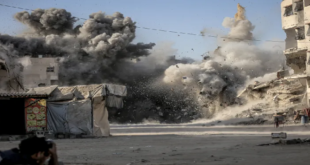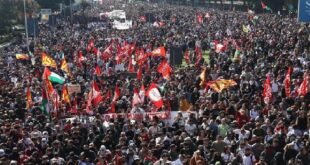22 July, 2019
CITY OF VICTORIA: Hong Kong has been left in shock after a night of violence on Sunday, which saw dozens of masked men storm a train station.
 The men – dressed in white shirts and suspected to be triad gangsters – assaulted pro-democracy protesters and passers-by in the Yuen Long area.
The men – dressed in white shirts and suspected to be triad gangsters – assaulted pro-democracy protesters and passers-by in the Yuen Long area.
This is the first time this kind of violence has been seen in the ongoing anti-extradition demonstrations.
Several lawmakers questioned why police were slow to arrive at the scene.
Footage posted on social media showed dozens of men attacking people with wooden rods and metal sticks inside the station.
Forty-five people were injured, with one person in critical condition.
Hong Kong’s Chief Executive Carrie Lam told reporters the gang attacks were “shocking”. She also condemned protesters for defacing China’s main representative office in the city earlier on Sunday.
 What happened?
What happened?
Pro-democracy protesters were set upon as they travelled back from a rally in the centre of Hong Kong, where riot police had fired tear gas and rubber bullets at protesters.
The masked men stormed Yuen Long MTR station at about 22:30 local time (14:30 GMT).
Local media said they were targeting people dressed in black – the colour most protesters were wearing.
In a statement, the government said: “This is absolutely unacceptable to Hong Kong as a society that observes the rule of law. The SAR [Special Administrative Region] Government strongly condemns any violence and will seriously take enforcement actions.”
One journalist, Gwyneth Ho, was attacked while she was in the middle of live streaming for news website Stand News. She is currently in hospital.
The Hong Kong Journalist Association said some reporters on the scene had equipment seized.
 Who are the men?
Who are the men?
It is not known who organised the attack.
Mr Lam, an opposition lawmaker, suggested the mob had ties to organised crime syndicates.
“Is Hong Kong now allowing triads to do what they want, beating up people on the street with weapons?” he asked reporters.
Some of the assailants did not seem too concerned about masking their identity, posting selfies online, before during and after the attack, reported the BBC’s China correspondent Stephen McDonell.
Lawmaker Lam Cheuk-ting said police had taken more than an hour to arrive.
“Hong Kong has one of the world’s highest cop to population ratio,” said another pro-democracy lawmaker Ray Chan in a tweet. “Where were [they?]”
Police on Monday said they had not made any arrests but were still carrying out investigations.
 What else happened on Sunday?
What else happened on Sunday?
Riot police fired tear gas and rubber bullets at protesters attending a large pro-democracy rally in Hong Kong, and charged demonstrators who threw objects at police lines.
Organisers of Sunday’s protest say more than 430,000 people took part but police put the figure at 138,000.
Mass protests have been held for weeks, initially over an extradition deal with mainland China but now covering other issues on democracy in Hong Kong.
Late on Sunday, riot police equipped with masks and shields were seen swarming towards protesters close to a ferry terminal on the main island.
Images outside of the liaison office, China’s central government building, show signs covered in graffiti. One of the slogans reads: “You taught us peaceful marches are useless.”
 Some protesters also covered CCTV cameras outside a police station with spray paint.
Some protesters also covered CCTV cameras outside a police station with spray paint.
The latest rally was put on edge after a huge haul of explosives was found along with pro-independence protest leaflets on Saturday.
The same day, a counter-rally in support of the police and against protest violence drew tens of thousands.
Tear-gas, rubber bullets, the trashing of parliament by protesters and sporadic clashes have created the worst crisis in the territory’s recent history.
The Hong Kong government has since suspended trying to pursue the extradition bill.
The former British colony is part of China but run under a “one country, two systems” arrangement that guarantees it a level of autonomy. It has its own judiciary, and a legal system that is independent from mainland China.
 What was Saturday’s counter-protest about?
What was Saturday’s counter-protest about?
It took place in the central Hong Kong district of Admiralty on Saturday, attracting 103,000 people according to police, but more than 300,000 according to organisers.
It was themed “Safeguard Hong Kong”. The South China Morning Post said attendees included locals, mainland immigrants, members of ethnic minorities and visitors from across the border.
The rally, which won coverage in Chinese state media, focused on support for the police and condemnation of the violence that has marred pro-democracy rallies.
Views differed, however, on how the Hong Kong government had tackled the crisis.
 How did this wave of protests start?
How did this wave of protests start?
They were sparked by the proposed extradition bill that would have allowed people to be sent to China for trial.
Critics said it would undermine Hong Kong’s judicial independence and could be used to target those who spoke out against the Chinese government.
The Hong Kong government suspended the bill, but this has not halted the demonstrations, which now reflect broader demands for democratic reform and concerns that freedoms are being eroded. (Int’l News Desk)
 Pressmediaofindia
Pressmediaofindia




